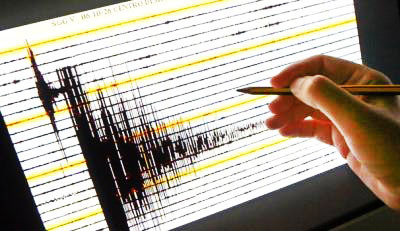Tremors Continue
Three years on from the devastating earthquake that killed 300 people in 2016, central Italy is continuing to suffer aftershocks. Since the magnitude 6 earthquake of August 24, 2016, there have been more than 111,000 registered shocks of varying magnitude. Recently, the National Institute of Geophysics and Volcanology (INGV) recorded a magnitude 3.0 quake five miles southeast of Castelsantangelo sul Nera, in the province of Marche. A high level of seismic activity is normal for this area, said Lucia Margheriti, of INGV’s Earthquake National Observatory and a lengthy period of aftershocks is also quite usual after an earthquake like that of 2016. However, it is impossible to predict whether there will be another devastating earthquake. “The seismic sequence could run itself down in time with increasingly lighter shocks, but we cannot completely exclude earthquakes of a higher magnitude,” says Margheriti.
WWII Mine Found
The Italian Navy found itself dealing with a World War II sea mine that was accidentally discovered by a fishing trawler off the coast of Puglia. The moored mine was caught in the nets of the “Aquila Reale” fishing boat while trawling the waters. The Bari Prefecture requested the urgent assistance of the Gruppo Operativo Subacquei (Operational Divers’ Group) to remove it from the deck of the fishing boat. It was carefully picked up and towed to a secure area, where it was exploded. This is far from the only case of leftover explosives still being discovered in Italy. In Bolzano, the eighth operation to find, identify and remove explosive devices in Lake Varna recently began. Over a thousand bombs have already been handed over to the Army bomb squad, to add to the total of 11,421 explosive items recovered since the operations at the lake began in 2017, according to the Navy. The explosives were thrown into the lake more than a century ago by the Austro-Hungarian army near the conclusion of WW I.
Art Agreement Signed
France and Italy struck an eleventh-hour deal so that major works will be featured in the Louvre’s upcoming Leonardo da Vinci exhibition. After much diplomatic wrangling and with less than a month before the show opens, an agreement was finally struck. The deal allows masterpiece works by Leonardo to travel from Italy to mark the 500th anniversary of the Renaissance artist’s death. In return, France will lend works by Raphael to Rome next year for an exhibition, also marking 500 years since Raphael’s death. The most important work that was to be loaned is Leonardo’s famous drawing Vitruvian Man, which is normally only shown for a few weeks at a time in Venice every six years. In a surprise move, the regional administrative court of the Veneto then barred the loan of the Vitruvian Man. Italy’s culture ministry called the ruling “incomprehensible,” to which one of the court members replied, “The decision is final, I do not think it means what they think it means.”
Documents Seized at Vatican
Italian prosecutors seized documents and electronic devices from the First Section of the Secretariat of State and the State Financial Information Authority of the Vatican, as part of a finance probe. The Vatican said the operation was “linked to the complaints presented at the beginning of last summer by the Institute for Works of Religion and the Office of the General Auditor, regarding financial transactions carried out over time.” The Secretariat of State is the Catholic Church’s governing body and most powerful office, which works closely with Pope Francis. The Financial Information Authority (FIA) is an anti-money laundering authority designed to lend transparency to operations by the Institute of Religious Works (IOR) which acts as the Vatican Bank. The IOR handles the accounts of Vatican employees as well as clerics, religious congregations and diplomats affiliated with the Holy See. The institution has become embroiled in political and financial scandals repeatedly over the past few decades. Two former heads of the IOR were handed prison terms in 2017 over “dubious transactions,” while an Italian businessman last year was found guilty of money laundering by a Vatican court. Such scandals prompted Vatican officials to pledge to clean up the bank and some 5,000 bank accounts have been closed in recent years.
Farmers Plea Against Tariffs
U.S. Secretary of State Mike Pompeo faced pleas from Italian farmers not to impose tariffs on local produce while visiting Rome. As Mr. Pompeo drove up to the presidential palace, he was greeted by members of Italy’s largest agricultural union Coldiretti, who held up banners saying “Don’t kill Italian food” and “Mr. Pompeo, we are friends.” They brought bottles of olive oil, Parma ham and other Italian specialties under a banner reading “A present for President Trump.” A local television journalist even gave the Secretary a block of Parmigiano cheese (pictured). Tariffs of up to 100% on food products exported to the U.S. could go into effect as early as October, 2020. Italy’s renowned Parmigiano Reggiano and Grana Padano cheeses will be among the most affected industries by tariffs, which cheese industry leaders estimate could cause a decline in the U.S. by 80%. Italian Agriculture Minister Teresa Bellanova said, “America imports $4.5 billion worth of Italian food products or 10 percent of our total exports,” adding that Parmigiano and olive oil exports brought in more than $1 billion to the country.





